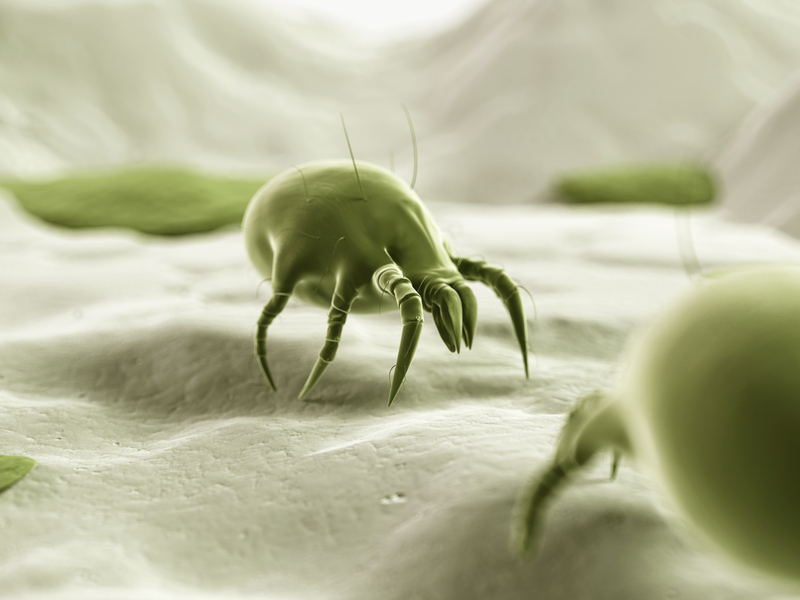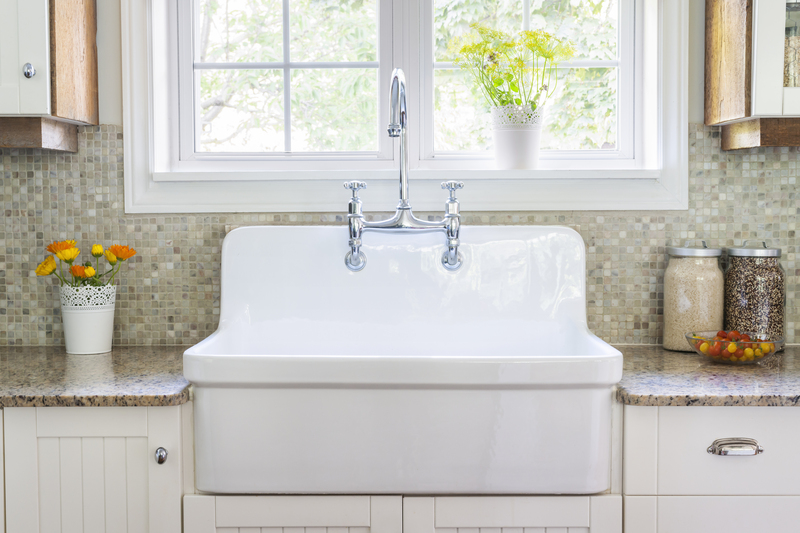Bathroom Bliss: Enjoy a Space Free from Mold
Posted on 02/09/2025
Bathroom Bliss: Enjoy a Space Free from Mold
Creating a healthy, inviting, and relaxing bathroom environment isn't just about aesthetics. One of the most important -- and often overlooked -- elements is keeping your bathroom free from mold. Left unchecked, mold can impact your health, ruin surfaces, and create persistent unpleasant odors. In this comprehensive guide, you'll discover how to achieve true bathroom bliss with proven methods to prevent, treat, and maintain a mold-free bathroom space.

Understanding Mold: Why Bathrooms Are Vulnerable
Mold is a type of fungus that thrives in moist, warm, and poorly ventilated environments. Bathrooms check all of these boxes because:
- Showers and baths produce abundant humidity
- Condensation often accumulates on windows, mirrors, and walls
- Leaks or poor seals allow water to persist unnoticed
- Poor ventilation means moist air lingers longer
Mold spores are everywhere, but they need the right conditions to colonize surfaces. That's why bathroom mold prevention is essential for both cleanliness and your family's health. Black mold, in particular, can cause respiratory issues, allergies, and other serious health concerns.
Health Risks Associated With Bathroom Mold
Mold in bathrooms is more than a cosmetic issue. Exposure to mold or its spores can trigger a range of health problems, especially in sensitive individuals such as children, elderly people, and those with respiratory conditions. Some of the most common health risks include:
- Allergic reactions (sneezing, red eyes, skin irritation)
- Asthma attacks or worsening symptoms
- Chronic coughing or wheezing
- Headaches and fatigue
Given these risks, it's crucial to keep your bathroom space mold-free and clean. Achieving this level of bathroom bliss starts with prevention.
Effective Mold Prevention Tips for Your Bathroom
Preventing mold is vastly easier and less expensive than removing it. Focus on keeping your bathroom dry, well-ventilated, and clean. Here's how:
1. Ventilation Is Vital
Proper ventilation is your bathroom's best defense against mold growth. When warm, moist air lingers, mold finds it easier to take root. Here are ways to improve ventilation:
- Install, use, or upgrade your exhaust fan. Turn it on during and after showers for at least 20 minutes.
- Open windows while bathing or showering, whenever possible.
- Leave the bathroom door and shower curtain slightly open after use to allow air circulation.
2. Reduce Moisture Wherever Possible
If you want to enjoy a consistently mold-free bathroom, minimizing lingering moisture is key.
- Wipe down shower walls, tiles, and floors after use with a squeegee or towel.
- Check for and fix leaks promptly, especially around the toilet, sink, and bathtub.
- Remove wet towels, bath mats, and clothing immediately.
- Avoid leaving standing water in containers, such as toothbrush holders or soap dishes.
3. Use Mold-Resistant Materials and Paint
Consider upgrading surfaces in your bathroom with mold-resistant products:
- Opt for mold-resistant drywall and backer boards, specifically in showers and splash zones.
- Use high-quality, mold-resistant paint on walls and ceilings. These paints contain antimicrobial agents.
- Choose non-porous materials (like glazed tiles, glass, or natural stone) that don't absorb water.
4. Keep the Bathroom Clean and Clutter-Free
Regular cleaning is essential for mold prevention in bathrooms. Moisture isn't the only ingredient mold needs -- it also thrives on soap scum, dirt, and organic matter.
- Clean tiles, grout, and glass details with a suitable bathroom cleaner weekly.
- Pay special attention to nooks and crannies, where mold spores may settle unnoticed.
- Keep shelves and corners clear of unnecessary bottles or objects which can trap moisture.
5. Dehumidifiers & Natural Solutions
If your bathroom suffers from persistent dampness, consider using a dehumidifier, especially in bathrooms with no windows. Also, natural options like leaving a box of baking soda, activated charcoal, or moisture-absorbing crystals can help reduce humidity levels.
How to Identify Mold: Early Signs and Hidden Problems
Preventing and treating mold successfully requires being able to spot it quickly, even in less visible areas. Here are signs of mold in your bathroom:
- Visible black, green, brown, or white spots on caulk, grout, or ceiling
- Discolored or peeling paint and wallpaper
- A persistent, musty odor -- even before you spot visible mold
- Soft or warped drywall, which can indicate a hidden leak and possible hidden mold growth
Inspect These Vulnerable Areas:
- Behind and under sinks, especially in cabinetry
- Under and around the toilet base
- In corners and along grout lines in tile installations
- Near exhaust fans and on ceilings above showers or tubs
- Window sills and frames
If you notice any of these signs, act quickly to remove the mold from your bathroom and investigate the underlying moisture issue.
How to Remove Mold from Your Bathroom
If, despite your best efforts, you detect mold, don't panic. Small outbreaks are manageable by most homeowners. However, extensive infestations or black mold cases (Stachybotrys chartarum) may require professional remediation. Here's how to clean bathroom mold effectively:
DIY Mold Removal for Bathrooms
For minor mold patches on tiles, grout, or hard surfaces:
- Wear gloves, a mask, and goggles to protect yourself from spores.
- Scrub affected areas with a solution of 1-part bleach to 10-parts water, or use an EPA-approved mold remover.
- For porous surfaces (like unsealed grout), you may need to reapply or even replace the material if the mold returns.
- Rinse the area thoroughly with clean water, then dry completely.
- Dispose of cleaning cloths or sponges properly after use.
Pro Tip: Never mix bleach and ammonia, as this produces toxic fumes. Always ensure good ventilation during any cleaning process.
Natural Alternatives for Mold Removal
If you prefer eco-friendly methods, try these natural mold-fighting solutions:
- White vinegar: Spray undiluted onto moldy surfaces, leave for at least an hour, then scrub and rinse.
- Baking soda: Mix with water to make a paste, apply to affected spots, allow it to sit, then scrub away.
- Hydrogen peroxide (3%): Spray on, let it foam for ten minutes, then wipe clean.
- Essential oils like tea tree oil have antifungal properties -- add a few drops to water in a spray bottle.
When to Call a Professional
If mold covers more than 10 square feet, keeps returning, or you suspect it's growing behind walls, contact a mold remediation specialist. Professionals will safely assess, remove, and ensure your space is fully restored to a mold-free sanctuary.
Long-Term Strategies for a Mold-Free Bathroom
Keeping your bathroom healthy and inviting involves establishing routines and making smart choices. Here are long-term strategies to ensure continued bathroom bliss, free from mold:
Design Your Bathroom for Easy Cleaning
- Choose seamless or large-format tiles and minimize grout lines where possible.
- Opt for frameless glass shower enclosures -- fewer nooks for water to collect.
- Use wall-mounted sinks and vanities to make under-floor cleaning easier.
Upgrade Fixtures and Materials
- Install high-quality vents, fans with timers, or humidity sensors to automate air circulation.
- Seal grout lines and apply waterproof caulk around tubs and sinks annually.
- Invest in low-flow faucets and showerheads -- they not only conserve water but also minimize splashing.
Adopt Regular Maintenance Habits
- Wipe down surfaces and dry the shower or tub after every use.
- Launder towels, bath mats, and shower curtains weekly.
- Check for leaks or moisture build-up during every household cleaning session.
- Refresh or repaint surfaces with mold-resistant paint as needed.

Frequently Asked Questions: Bathroom Mold Prevention
- How can I make my bathroom completely mold-proof?
While it's hard to make any space 100% mold-proof, using mold-resistant products, maximizing ventilation, and cleaning regularly will help you enjoy a bathroom free from persistent mold issues. - Is bleach really the best mold cleaner?
Bleach is effective on non-porous surfaces but isn't always the best for deeper infestations in grout or drywall. In these cases, hydrogen peroxide or professional remediation may perform better. - Can mold in my bathroom spread to other parts of the house?
Yes. Mold spores are airborne and can travel, especially if the source of moisture remains unchecked. Address bathroom mold quickly to avoid larger problems. - Will a bathroom dehumidifier help prevent mold?
Absolutely! Especially in bathrooms without windows or where humidity builds up, a dehumidifier is a wise investment for maintaining a mold-free environment.
Enjoy Bathroom Bliss -- Your Mold-Free Sanctuary
Achieving bathroom bliss starts with vigilance. By understanding how and why mold grows, investing in mold-resistant materials, ensuring proper ventilation, and adhering to simple daily habits, you can transform your bathroom into a delightful, healthy haven.
Don't wait for visible signs of mold growth before taking action. With ongoing maintenance, prompt attention to leaks, and smart design choices, your dream of a mold-free bathroom sanctuary is well within reach. Say goodbye to musty smells, unsightly stains and health worries -- and welcome in bathroom bliss for the whole family!




